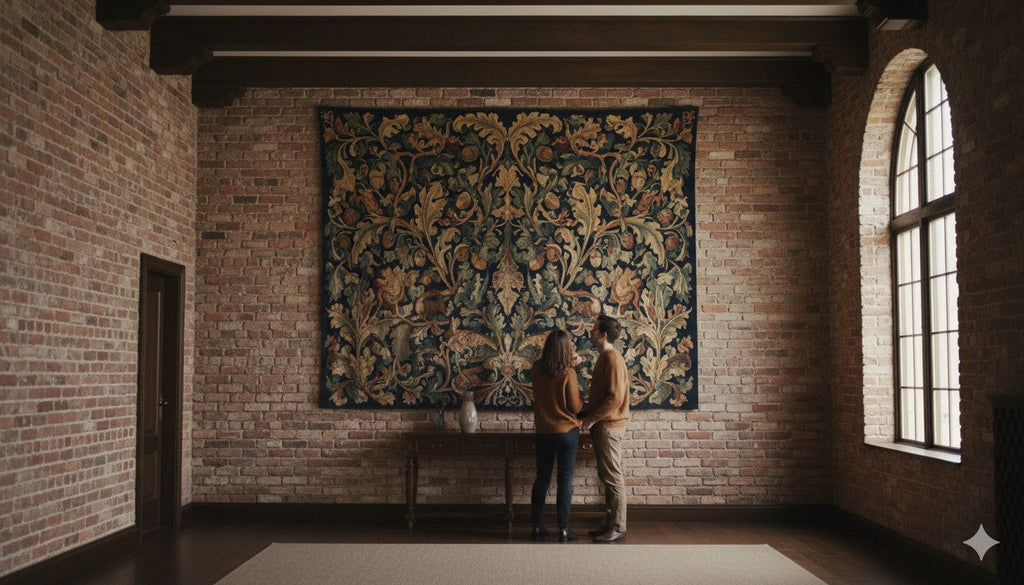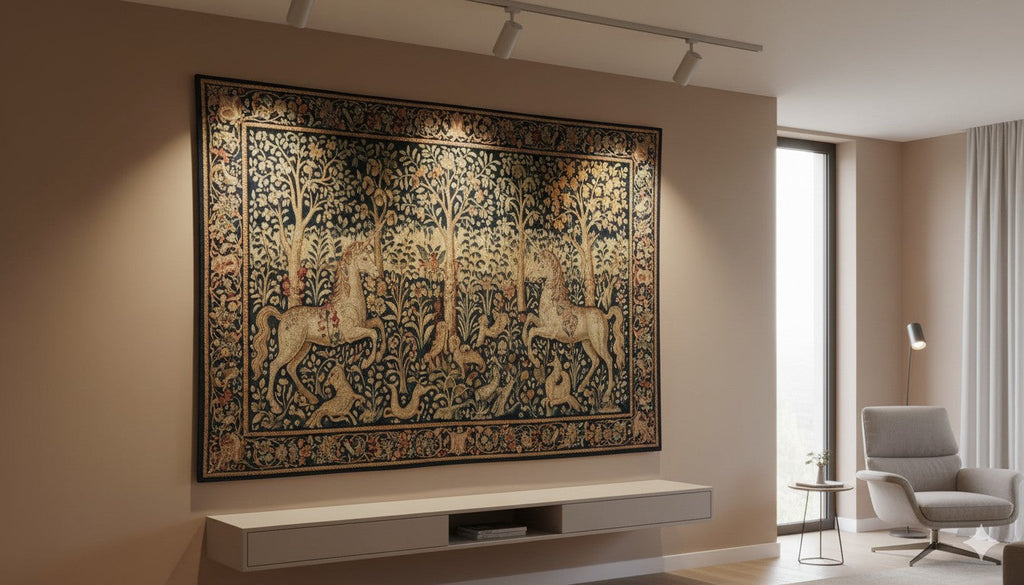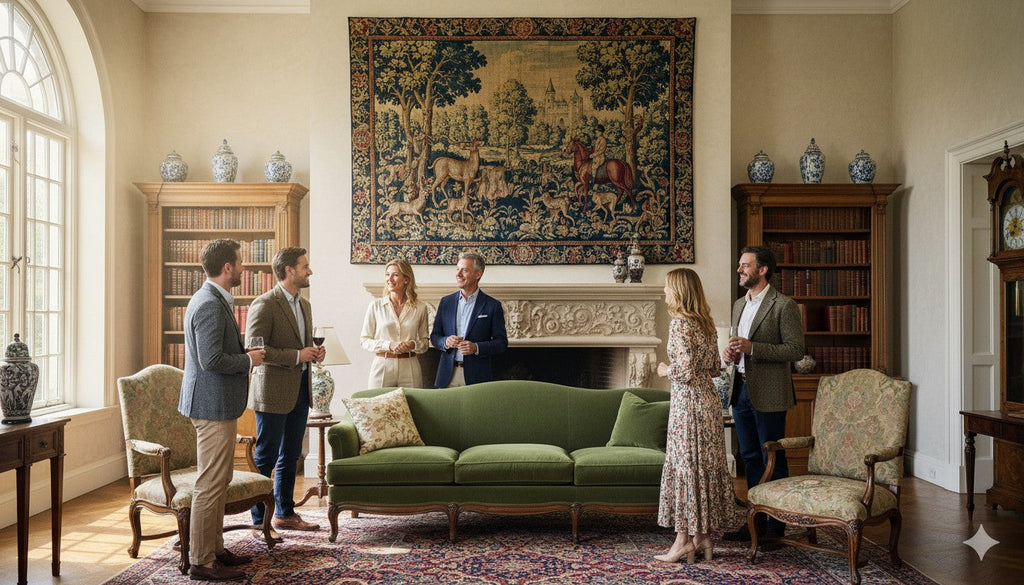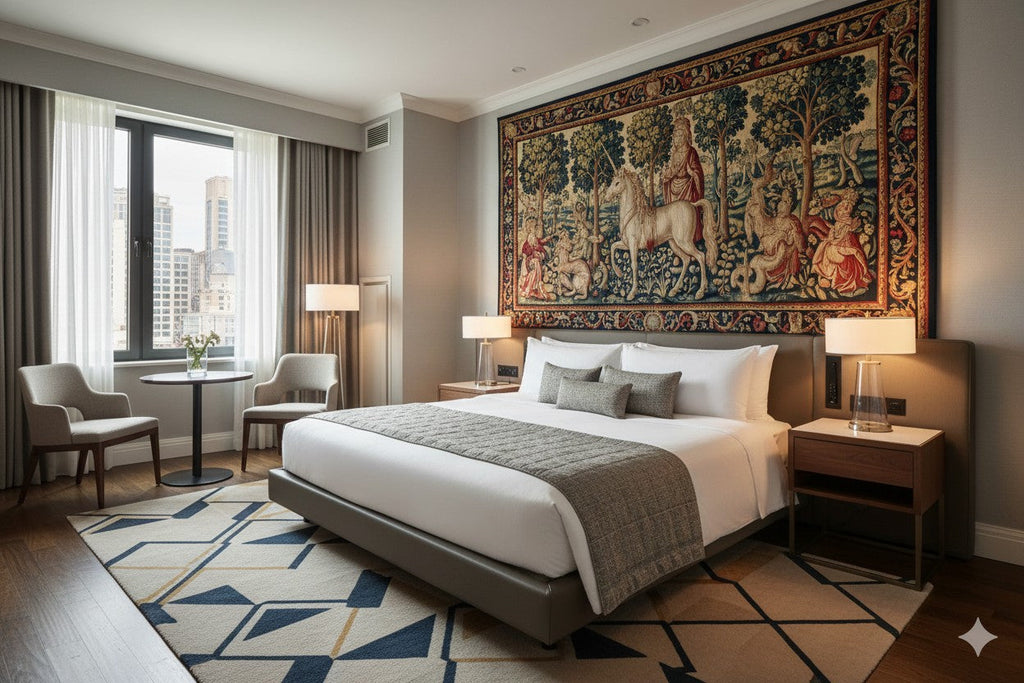Enjoy Free Shipping Across the USA!
Why Tapestry Is Often Pricier Than Traditional Art: Top 5 Reasons

Tapestry is a type of creative textile work produced by weaving fibre materials into a range of products. It includes clothing, artistic materials and various household accessories.
It is considered the most popular and unique form of textile work and gained a lot of popularity during the 14th century to 18th century in Europe.
Some of the most unique and creative artworks of tapestries include covers of various home accessories, tablecloths, and wall-hanging works.
Tapestries can change an interior into a space of elegance and majesty. Weaving of these pieces of artwork involves a hand-manipulated strategy that follows a technique of passing through threads through the wefts and warps.
This intriguing piece of material involves a hectic journey to produce and minute detailing as well. The surprising point is that these exquisite textile artworks often command a higher price tag compared to the other available traditional art forms.
In this blog post, the mystery behind the higher cost of tapestries will be unveiled and discover the top five reasons why they are priced above the usually expected price.

How Much Does a Tapestry Cost?
Similar to inquiring about the price of a car, one might ask about the cost of a tapestry. If you have the extra cash lying around, you can purchase the finest, rarest car known to man, or you can settle for a decent, entry-level economy car at the other end of the spectrum.
However, most of us will have to pay between $100 and $200 for a refined, heirloom-quality tapestry. It is not too bad, given the amount of labour that goes into creating these intricately designed woven pieces of art.
5 Reasons Why Tapestry is Often Pricier Than Traditional Art
1. Impact of Intricate Craftsmanship
The weaving process of tapestry is a labour-intensive process. It needs an efficient level of skilled and crafted artisans. Talented and skilled artisans weave the threads individually, which helps them to incorporate all the details minutely. It also includes the incorporation of vibrant colours in the tapestry.
In a traditional painting, the artists can finish the artwork quickly, but in the case of the tapestry, it takes a considerable amount of time and hardship for its production. This meticulous craftsmanship and trouble contribute significantly to the higher cost of tapestries in today's market.
2. Impact of the Quality Materials Used
Another determining factor for the extensive range of tapestries is the premium materials used for weaving them. They play a pivotal role in determining the market cost, and it varies from one country to another.
High-quality premium materials like silk, polyester, wool, and cotton are usually used for tapestry weaving. Those materials are capable enough to capture the nuances of the design.
Polyester is considered the most effective material for printed tapestries, whereas cotton is the standard for woven tapestries. These premium materials not only enhance the visual appeal of the tapestry but also ensure that it stands the test of time.
Additionally, the cost of sourcing and processing these top-tier materials inevitably adds to the overall expense of creating a tapestry.
3. Impact of Versatility and Size Matters
The size and versatility of tapestries help them with a unique advantage over other traditional art. Tapestries can produce a majestic appearance and serve as the centre of attention in any space, as they have the capacity to cover large wall areas.
More enormous tapestries, on the other hand, are more expensive to produce because they need more raw materials, labour, and time. The ease of transportation and hanging strategy of a tapestry make the tapestry more appealing and justify the higher price.
4. Impact of Specialized Framing Challenges
Tapestries refer to a unique type of challenge when it comes to the requirement of standard framing. Other traditional art pieces may need a very different structure from the tapestries.
The sophisticated designs of these artworks require specialized framing techniques to safeguard their integrity and protect them from environmental hazards.
The overall cost of framing a tapestry involves factors like the size of the tapestry, the type of material used to develop the frame and expertise for ensuring proper preservation. This additional investment in framing contributes to the overall cost of owning a tapestry.
5. Limited Edition and Artisanal Appeal
Some tapestries are sold as limited edition stocks, which are unique and one-of-a-kind pieces. This adds an additional element of exclusivity to their allure.
Artisans' efforts to create a unique tapestry make the tapestry more expensive. Buyers pay the cost of this uniqueness, craftsmanship and invested time of the artisans.
Summary
Hence, if someone asks how much a tapestry costs, the blog will explain the factors intricately linked to the answer. The main highlighting factors making the tapestry more expensive than the other artworks are craftsmanship, hardship, premium materials, and framing.





















